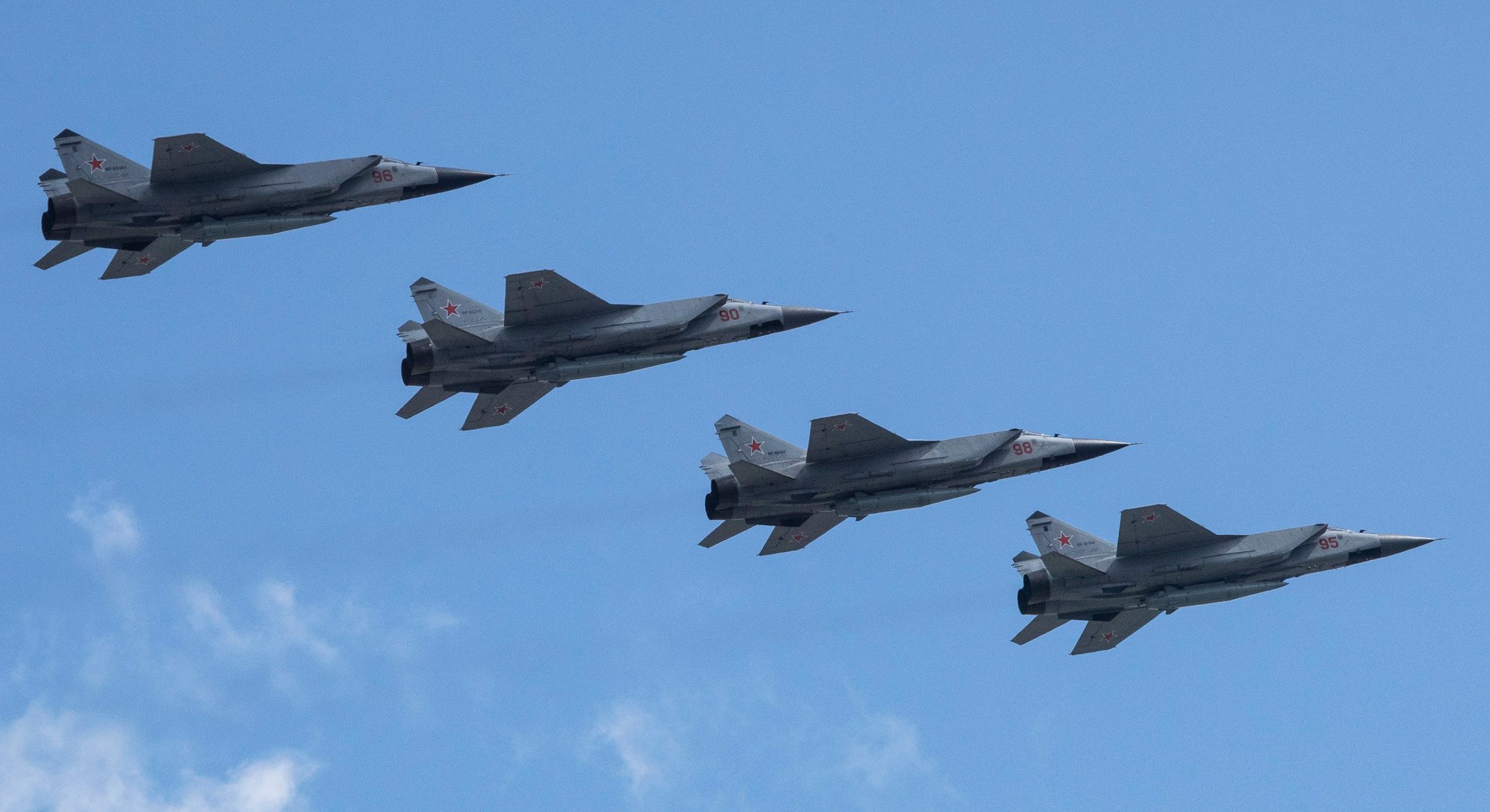The MOD assessment said that Russia likely launched one at a target in central Ukraine on December 14, the missile’s first outing since August.
According to a Telegram post by Ukraine’s Air Force, Russia launched three of them towards Kyiv and a strategic airfield in the western city of Starokonstantinov.
An anti-missile unit intercepted one in the Kyiv region, Ukraine said. It didn’t say what happened to the other two.
The MOD already reported in October that Kinzhal’s performance had so far been “poor,” despite the bombast with which Russia describes it.
In a 2018 address to Russia’s Federal Assembly, Putin numbered them among six super weapons, per the MOD.
At the time, Putin touted the missile as “flying at a hypersonic speed, 10 times faster than the speed of sound, that can also manoeuvre at all phases of its flight trajectory.”
He said that its speed “allows it to overcome all existing and, I think, prospective anti-aircraft and anti-missile defence systems, delivering nuclear and conventional warheads in a range of over 2,000 kilometres.”
‘Nonsense’: Putin chides Biden, says Russia has no interest in attacking Nato
‘Nonsense’: Putin chides Biden, says Russia has no interest in attacking Nato
However, the Kinzhal’s claim to be a hypersonic weapon doesn’t hold up to scrutiny.
Missiles are considered “hypersonic” when they travel over five times the speed of sound with “significant maneuverability,” per a research briefing by the MOD.
While ballistic missiles, like the Kinzhal, do have the capacity for hypersonic flight with some maneuverability, they don’t have sustained hypersonic flight ability, experts said, as Business Insider previously reported.

Kinzhal is an advanced system designed to be fired at speed and altitude from the MiG-31, a fast-moving Russian combat aircraft, per the Center for Strategic and International Studies’ Missile Threat project.

